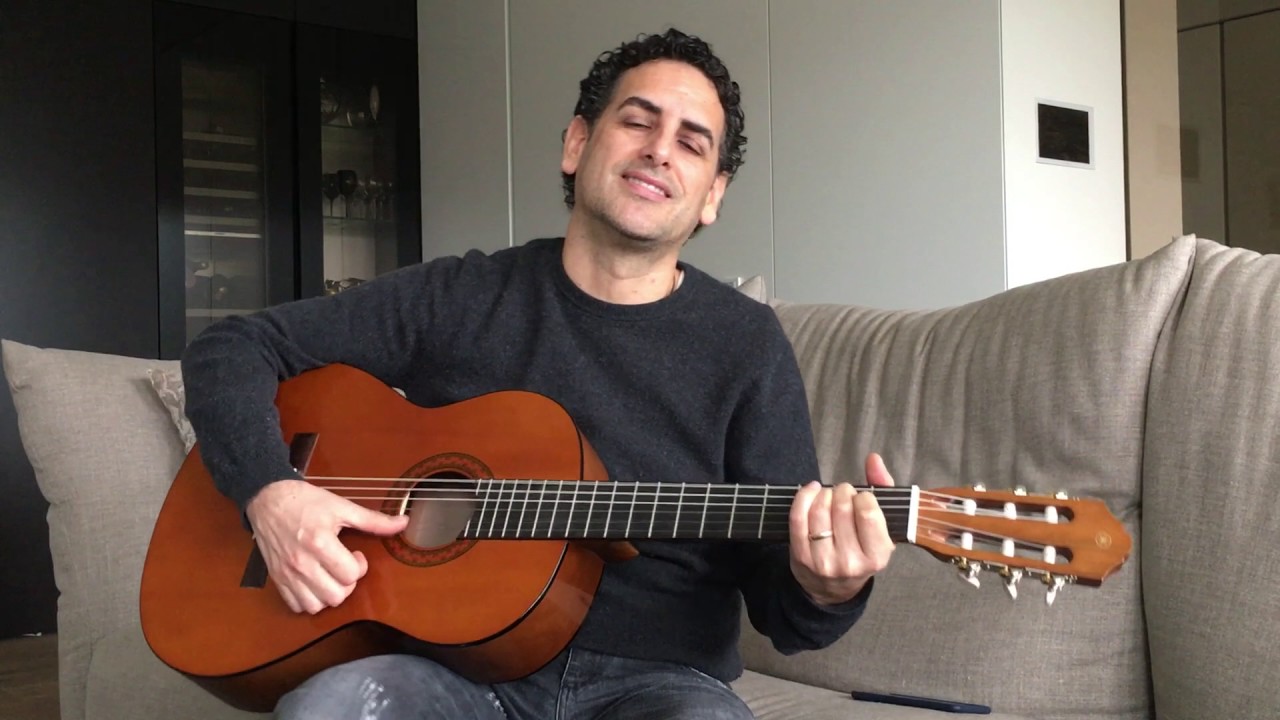
How To Hold Classical Guitar | Classical Guitar Shed
Guest Blog by Tracy Powers
Find out how to hold a classical guitar the right way, and learn why this is so
important for both beginners and advanced players.

How To Hold Classical Guitar: An Expert’s Advice
It’s no secret that playing the classical guitar can be a tough and rewarding experience, but it is
not always an easy journey.
Whether you are just starting or an experienced musician looking for pointers and advice, it is
important to know how to properly hold the guitar to produce the best sound possible.
In this blog post, we’ll provide insights on:
● The importance of posture and good technique in playing classical guitar
● Some common anatomical points of reference on your body that you should use when
positioning yourself and your classical or acoustic guitar
● Proper techniques on how to hold classical guitar
Keep reading if you need some tips on mastering this important skill!
The Importance Of Good Classical Guitar Posture
As classical guitarists, posture and technique are key to playing our best. Not only do we need
to learn classical chords and notes, but we also need to know how to hold a classical guitar
properly to produce the best sounds.
The guitar position must allow flexibility while the wrists maintain their natural curvature. This
way, classical guitarists create less tension in their hands, arms, and shoulders, giving them
long-term benefits of fewer cramps or even arm fatigue.
The Important Anatomical Points of Reference To Position Yourself and Your Guitar
Learning to play an instrument requires practice. You must use common points of reference on
your body to ensure you hold the instrument in the correct position. These points typically
include the
● Neck
● Shoulder blades
● Elbows
● Hips
● Feet
When playing guitar, be sure that your shoulders stay level. Your wrists are bent when pressing
the strings but not too much to cause discomfort. Your elbows should be aligned with your sides
rather than sticking out so you can move freely without too much strain.
Don’t forget about the hips. Keep them relaxed and allow yourself room to move with the music!
Finally, make sure that your feet are planted firmly on the ground. A steady foundation is
necessary for playing well with control and accuracy. With these simple pointers in mind,
positioning yourself correctly can make all the difference in an enjoyable musical experience!
Steps on How To Hold A Classical Guitar Properly
You must first master the fundamentals of holding a classical guitar. Playing a classical guitar
will feel easy and pleasant if you are seated properly.
Step 1: Sit Properly
● Place your instrument down on a chair without holding it. The chair should be the perfect
height so that your knees nearly create a 90-degree angle.
● Place both feet flat on the ground about hip-width apart.
● To ensure that your entire upper body is balanced as effortlessly as possible, straighten
your neck, spine, and head.
Step 2: Place The Guitar
With whatever classical guitar support you choose to employ, set the instrument in the
appropriate playing position once you are properly seated. The objective is to position the guitar
for your right and left hands can easily reach the strings.
When Using a Footstool:
● Put it underneath your left foot with the back three to four notches lifted.
● Position the guitar so that the lower bout (lower half of the body) sits on your right thigh
and the center of the body rests on your left thigh.
● To create extra space for the body, you can slide your right foot just a little bit outward.
When Using an Affixable Support
● Put the guitar on your left thigh and fasten the support to the side of the instrument (each
support should come with detailed instructions).
● The lower bout should support your right leg.
When Using a Strap
● Tie the left end of the strap to the head and the right end to the right peg of the guitar.
The strap should now be placed over your back and left shoulder after inserting your
right arm and head through it.
● The lower bout should support your right thigh. To prevent the guitar from being
excessively loose, adjust the strap.
General Instructions for Positioning the Guitar
● The left side of the guitar should have a neck.
● The angle of the guitar neck should be less than 45 degrees.
● Ensure the guitar’s head does not protrude above your eye level to verify this.
● The guitar should be centered across your body, no matter which supports you choose.
● Your nose should be between the 12th fret and the guitar’s soundhole when you gaze
down.
● Your torso should be in the middle with the guitar, neither too high nor too low.
● The guitar’s top should be about chest height. If you are wearing a button-up shirt, your
chest level should be three to four buttons below the top.
Step 3: Place Your Arms on The Guitar
● Place your right arm on the lower bout of the instrument and raise it. The elbow side of
your lower arm should be in contact with the edge of the instrument. You shouldn’t have
to consciously hold your arm in place because it should feel properly balanced.
● Place your hand, so it rests on the bottom of the sound hole.
● Wrap your left arm over the neck’s midsection after picking it up. Your elbow should
dangle naturally below your hand and be at a relaxed angle.
● Softly rest your finger on the fretboard, and your thumb should rest behind the neck.
● Stretch away from your body equally. For instance, even when your right arm is close to
your torso, you shouldn’t need to extend your left arm far.
● Relax your wrist until making it almost looks straight.
● To reach the strings, the right hand can slightly arch.
● Be sure to maintain relaxed shoulders as well. Return to step 2 to reposition the
instrument if you have trouble getting your arms to rest securely.
Final Thoughts
As you can see, there are various things to remember when learning to hold a classical guitar.
But don’t be discouraged! With a little practice, you’ll be playing like a pro in no time. For more
tips on how to improve your guitar-playing skills, be sure to visit Classical Guitar Shed. We
update our blog regularly with new playing tips and tricks so that you can continue honing your
craft.
Until next time – happy practicing!
